Kalanchoe 'Pink Butterflies', also sometimes referred to as Pink Mother of Thousands, is a variegated form of Kalanchoe x houghtonii. The species itself is a hybrid cross between Kalanchoe diagremontiana and Kalanchoe delagoensis.
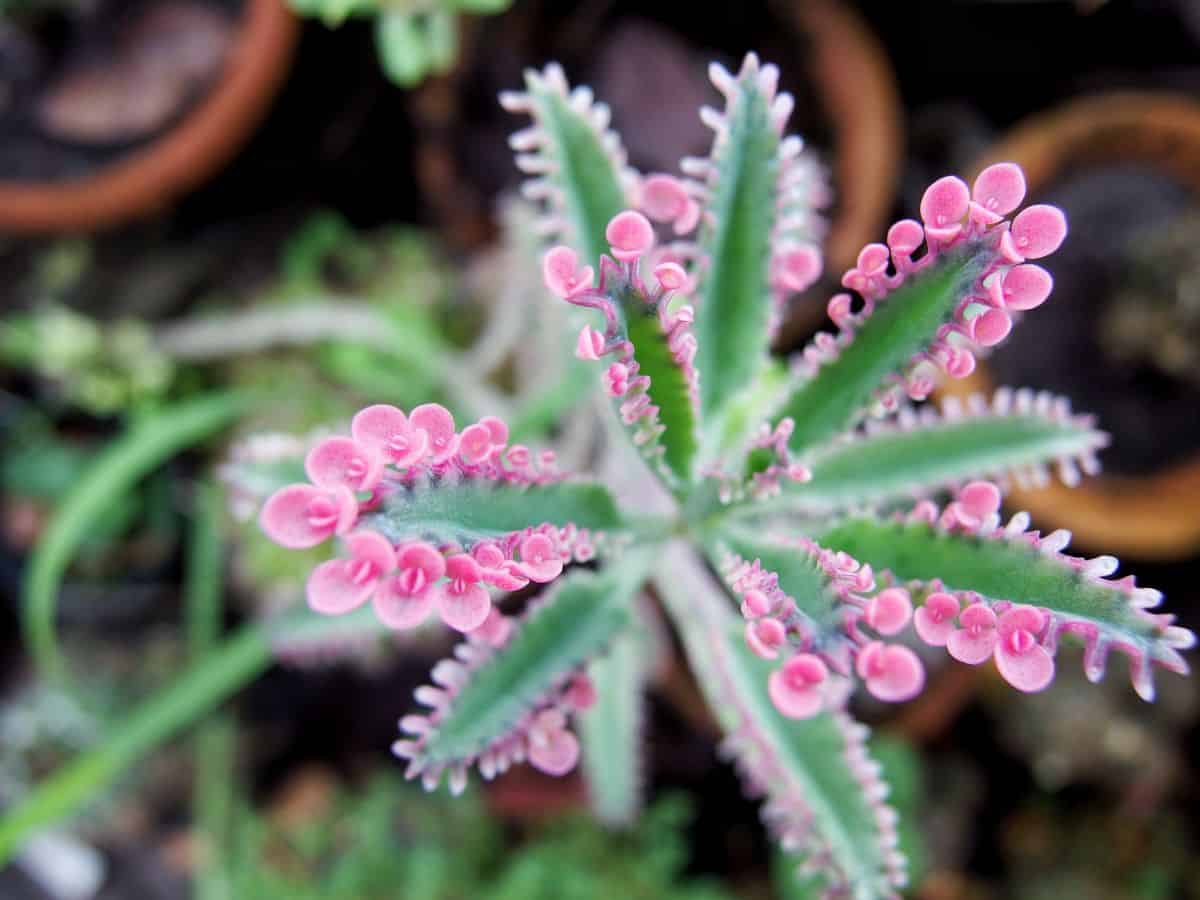
Though beautiful, this plant is unique from the hybridized parent plants in that it is viviparous, which means it can produce tiny plantlets along the leaf margins that can readily take root once fallen.
Pink Butterflies produce tiny plantlets along its leaf margins, but these vibrant pink plantlets rarely root. Their beautiful pink color is due to a lack of chlorophyll, which means they eventually die once separated from the main plant.
Jump to:
Kalanchoe ‘Pink Butterflies’ Appearance
| Name: | Kalanchoe x houghtonii. |
| Soil: | Soil that can drain quickly |
| Blooming: | Spring |
| Light: | Bright light |
| Water: | When the soil is dry out |
| Propagation: | Stem cuttings and seeds. |
Pink Butterflies is a rather tall succulent that can reach up to 36 inches in height at maturity. It has an erect stem without branches. The stem is covered in fleshy leaves that resemble a boat in shape.
The leaves themselves are a green or brownish-green color with deep purple splotches on the underside. The leaf margins are serrated and lined with bright pink plantlets. As stated earlier, these plantlets lack chlorophyll.
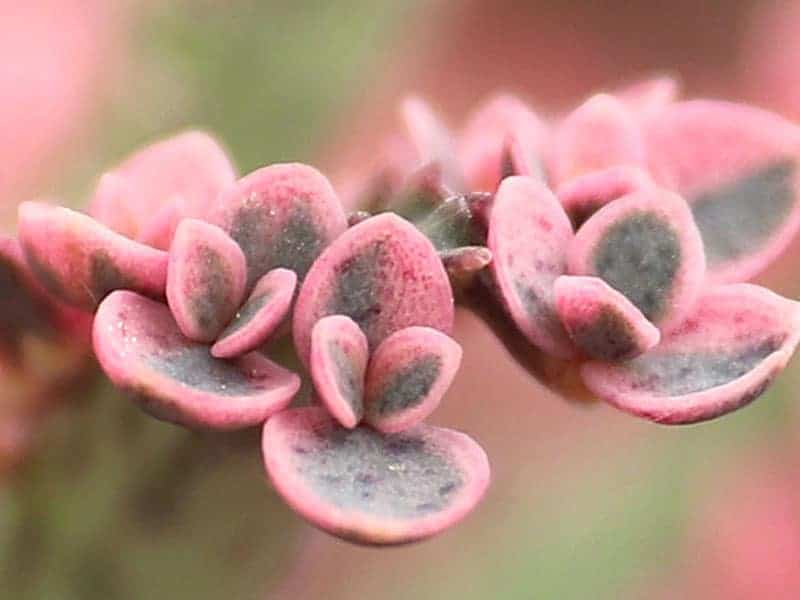
Buy it from:
When in bloom, Kalanchoe ‘Pink Butterflies’ produces drooping pink flowers. The flowers measure just over an inch in length. The flowers typically appear in spring or summer and can last for much of the growing season.
Caring for Kalanchoe ‘Pink Butterflies’
If you’re looking for a brightly colored plant that’s easy to care for, look no further than Kalanchoe‘Pink Butterflies. This plant requires minimal care and is a great way to brighten up any space.
The only special care requirement of Pink Butterflies is its preferred light levels, but beyond that, it’s an excellent choice for succulent gardeners of all experience levels. Since few of the plantlets along the leaf margins will root when detached, it’s also a great choice for gardeners who would rather not deal with a large number of plantlets taking root.
Water
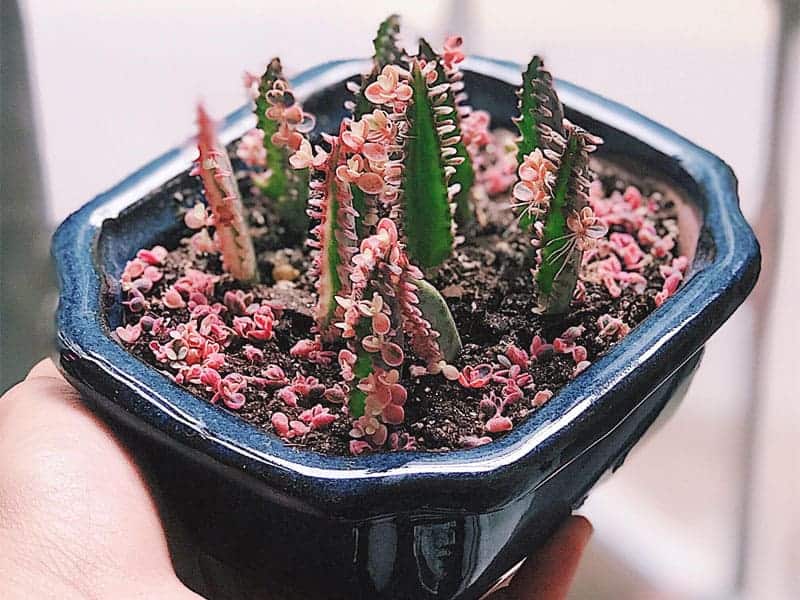
As with most succulents, Pink Butterflies requires deep watering but not on a frequent basis. Though these plants do require more water than some species of succulents, overly wet soil should be avoided as it can quickly lead to root rot.
After watering, the first inch or two of the soil should be allowed to dry out before watering again. This measurement can extend deeper during the winter when the soil can dry out even more between watering.
It’s recommended to use a soil moisture meter or your finger to check soil moisture levels before watering. This is because if root rot is allowed to develop, you likely won’t notice until it’s too late to keep your plant alive.
No products found.
Root rot is a sneaky disease that takes hold of your succulent below the soil’s surface. By the time you recognize the rot moving up the stem of your Kalanchoe, it’s too late to address the problem.
Like most succulents, the signs of overwatering are usually quite clear. The fleshy leaves of Pink Butterflies will become bloated, mushy, and almost translucent. The bottom leaves may yellow and fall off. If overwatering is continued, it’s likely that the plant’s roots will begin to rot.
You’ll also need to keep an eye out for symptoms of underwatering. If the leaves of your Kalanchoe begin to appear thin, wrinkly, or shriveled, then you know it’s time to water.
Depending on where you live, you may also need to adjust your watering schedule to adapt to the weather. Your Kalanchoe will need water more frequently during hot and dry weather, especially during the active growing season, while it may need slightly less during cool or humid weather, as well as during the winter.
Light
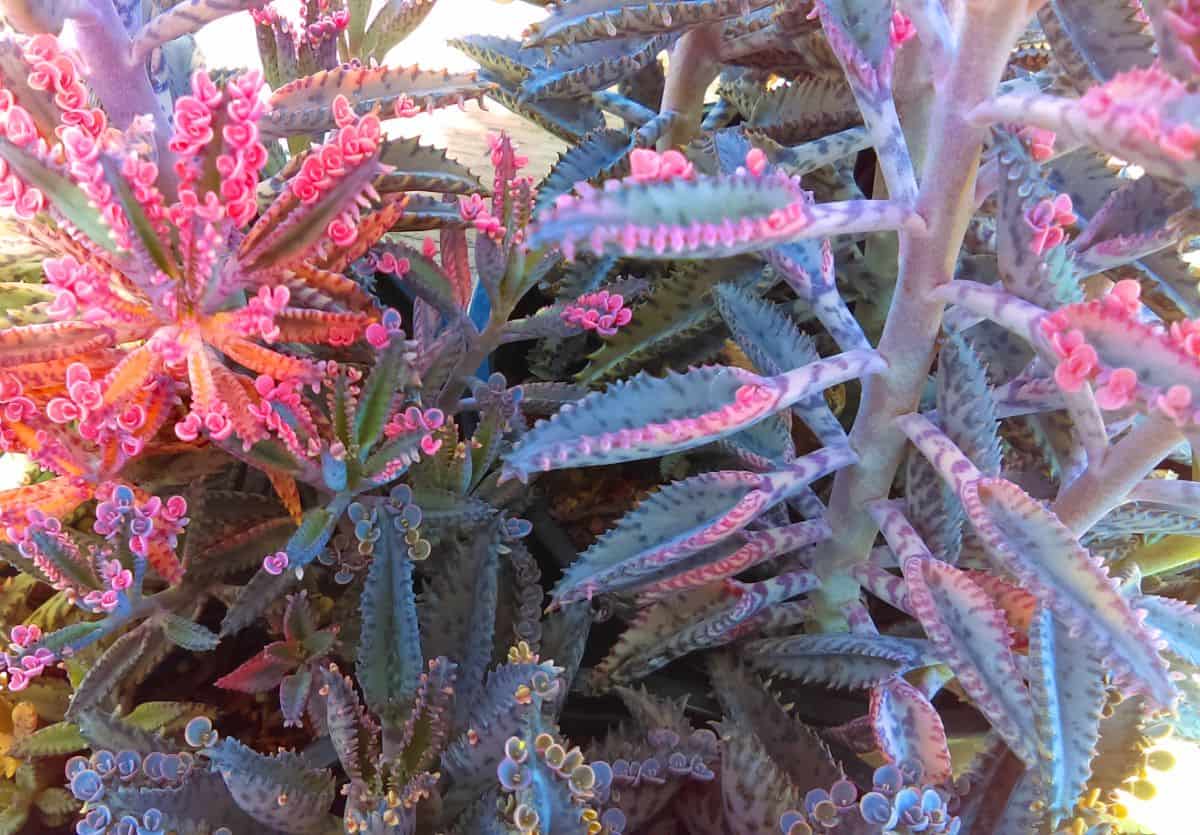
When grown indoors, Kalanchoe‘Pink Butterflies’ requires bright light. East or west-facing windows should provide plenty of light. A south-facing window may also work, but caution should be taken as strong indirect light can cause the leaves to burn.
In the right climates, it’s also possible to grow Pink Butterflies outdoors. When grown outside, it’s recommended to plant this succulent in an area with filtered or partial sun. Again, too much direct light can burn the leaves, especially if it’s exposed during the hottest parts of the afternoon.
When introducing your Kalanchoe to an increased level of light, it’s important to do so slowly to avoid sunburning the plant. By increasing the amount of direct light over a period of several weeks, you reduce the risk of damage to your succulent.
If you start to notice any discolored or darkened areas on your plant, it’s likely getting burned and you’ll need to move it to an area with reduced light. These areas cannot be repaired, but they can be trimmed away if you find them unsightly.
Despite its preference for partial sun, Pink Butterflies is not a plant that’s suitable for low light environments. If your Kalanchoe starts to etiolate, you’ll need to move it to a sunnier area or invest in a grow light.
Grow lights are an easy and relatively inexpensive way to increase your available light no matter how dim your home or office may be. Just be sure to get a full spectrum light to ensure your plant is getting the energy it needs to thrive.
Temperature
Like other species of Kalanchoe, Pink Butterflies prefer warmer climates. They are not frost-hardy plants and will not survive a hard freeze. If you live in a climate where winters can be frigid, you’ll need to plan on growing your Kalanchoe indoors or bring it inside during the winter.
Even when grown indoors, it’s best to avoid areas where sudden temperature changes or drafts may stress your plant out. Otherwise, most indoor spaces are kept warm enough year-round for Pink Butterflies to grow comfortably.
However, if you live in a warm climate, it’s completely possible to grow Pink Butterflies outdoors so long as you can keep it in an area where they’ve protected from the sun’s afternoon rays.
See Related Topic: Vicks Plant
Soil
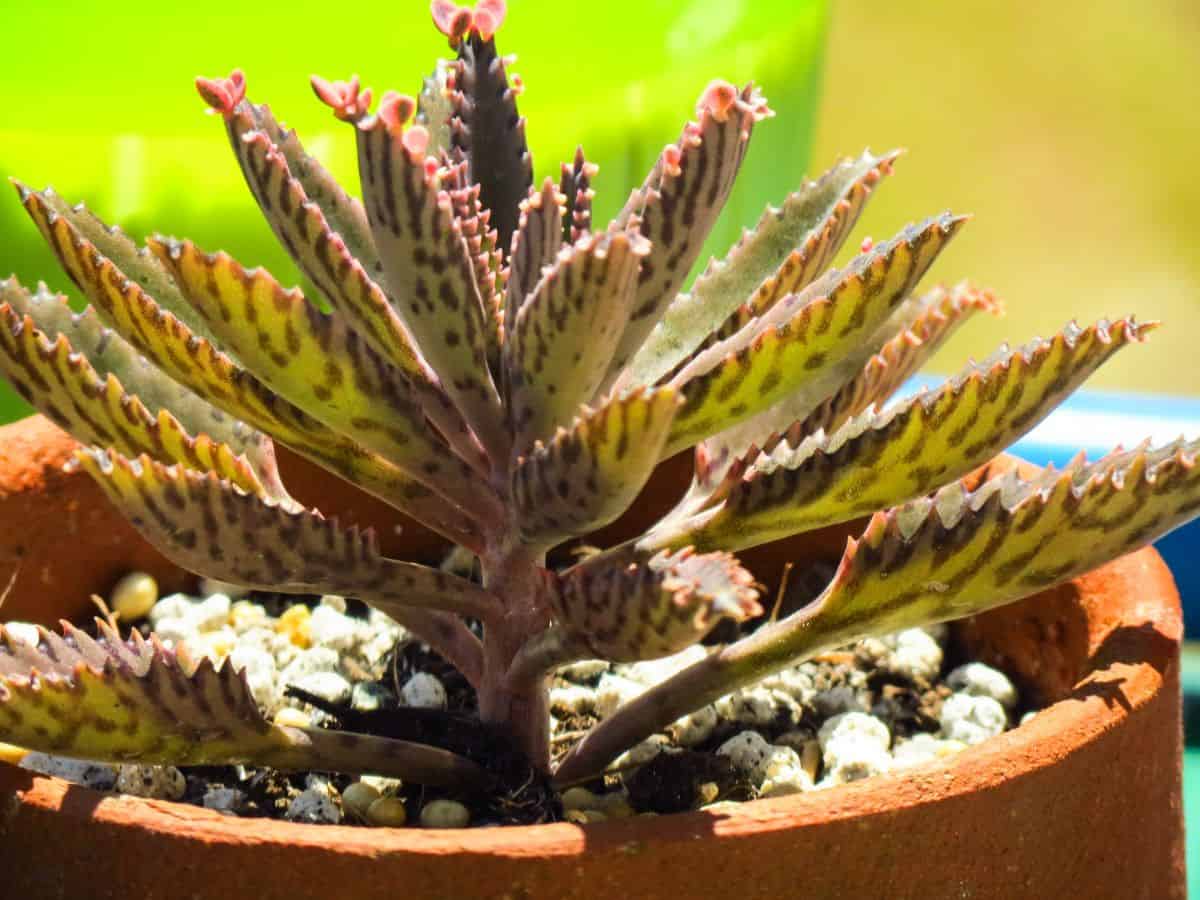
As with most succulents, Pink Butterflies prefers soil that can drain quickly. Look for soil mixes containing larger particles of coarse sand, gravel, pumice, perlite, and even bark. These ingredients are ideal for draining away excess moisture as well as providing much-needed airflow to the roots.
You’ll want to avoid soil mixes with large amounts of clay, peat moss, and coconut coir, as these ingredients have a tendency to retain moisture. Moisture retention can easily lead to accidental overwatering and root rot.
If you’re not the type of gardener that makes your own soil, look for a commercial soil mix formulated for use with succulents and cacti. These types of soil are ideal for fast drainage. If you can’t find exactly what you want, you can always buy a commercial cactus soil and adjust it by adding your own ingredients.
Container
The most important feature to look out for when choosing a container is drainage. Though it is possible to grow Kalanchoe in containers, it’s not recommended as you have to be incredibly precise with your watering schedule to avoid overwatering.
If you have a habit of giving your succulents too much water, you may also want to use a container made from terracotta. Terracotta tends to absorb some moisture from the soil, whereas glazed ceramic and plastic pots do not.
Propagating Kalanchoe ‘Pink Butterflies’
Kalanchoe ‘Pink Butterflies’ is an incredibly easy succulent to propagate. There are a few propagation methods to choose from, but even the most inexperienced gardener can propagate this plant with ease.
Plantlets
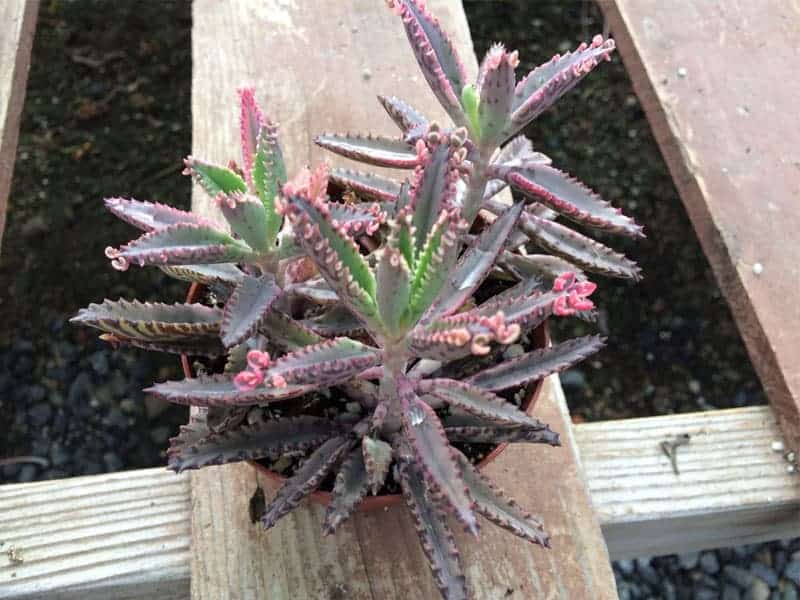
For plants similar to Pink Butterflies, it’s typically quite easy to propagate the plant using the tiny plantlets growing on the leaf margins. They normally drop easily and take root with few problems. However, due to the bright pink color and lack of chlorophyll, it can be a challenge to get Pink Butterflies plantlets to root.
If you would like to attempt this challenge, be sure to provide your plants with plenty of light to encourage root growth. With any luck, you may see a few tiny roots begin to sprout. Once the roots appear, it’s as simple as caring for any other Kalanchoe.
Cuttings
Pink Butterflies can also be easily grown using stem cuttings. In fact, this tends to be the most popular method of propagation with this plant due to the simplicity of the process. To get started, you’ll need to collect a few cuttings from your existing Pink Butterflies.
Choose a healthy section of the stem and cut it away using a sharp, clean pair of scissors or gardening shears. Sharp tools will leave a clean cut and limit the damage to both the cutting and the original plant.
Be sure to handle your cuttings carefully as the plantlets along the leaf margins are quite fragile and can come off with rough handling. This isn’t necessarily a bad thing, as you can also try rooting the plantlets if they fall off, but it’s something to be aware of.
After you’ve collected your cuttings, you’ll need to give them a few days to air dry before you can place them in the soil. This allows their wounds to callous, which will help prevent any potential infection from fungus or bacteria once they’re introduced to their new containers.
Once the cuttings have calloused, you’re ready to plant. At this stage, you can dip the cuttings into a rooting aid such as rooting hormone powder if you’d like, but this isn’t required for healthy growth. It can speed up the rooting process, so it’s up to you whether you perform this additional step.
Finally, you can place your cuttings into any succulent approved soil. Some gardeners prefer to use sterilized soil for their cuttings to further reduce the risk of infection, but this is also optional.
It can take up to a few weeks for roots to appear, so it’s important to be patient with your cuttings. Once the roots have sprouted, you can begin treating your Kalanchoe just as you would a mature plant.
Seeds
If you’re feeling adventurous, you can also try propagating Pink Butterflies with seeds. However, this is the slowest propagation method, so you’ll need to be patient. Kalanchoe are not the slowest growing species of succulent, but they aren’t exactly quick either. It may be some time before you have a mature plant.
If you already have Pink Butterflies in your succulent collection, you can try collecting seeds from your own plants. This can be a fun way to experiment with propagation, but if you aren’t up to this task, you can also buy seeds on the internet.
There are plenty of reputable seed vendors online that specialize in selling succulent seeds. Even difficult to find species such as Pink Butterflies can be found if you’re working with the right vendor.
Once the seeds are in your possession, you’re ready to sow them. Use the same well-draining soil that you would use with mature Kalanchoe. You’ll want to keep the soil moist, but not overly wet.
Consider using a seed tray or other shallow dish for this project. A shallow dish that can be easily covered will help you control moisture levels. Avoid overly wet soil as it can cause the seeds or seedlings to rot. You should also avoid placing your seeds in direct sunlight if possible.
Some gardeners soak the seeds prior to sowing to encourage germination, but this step is optional. When you’re ready, sprinkle the seeds across the surface of the soil but do not cover them.
Again, you’ll need to keep the soil moist but not wet. After a few weeks, you should begin to see tiny seedlings sprouting from the soil. Once most of the seeds have germinated, you can uncover the container and allow the soil to dry out a bit more.
After the seedlings have reached a size where they seem sturdy enough to withstand transplanting, you can move them to their own containers. Be sure to transplant only when the soil is dry to limit any damage to the root systems.


